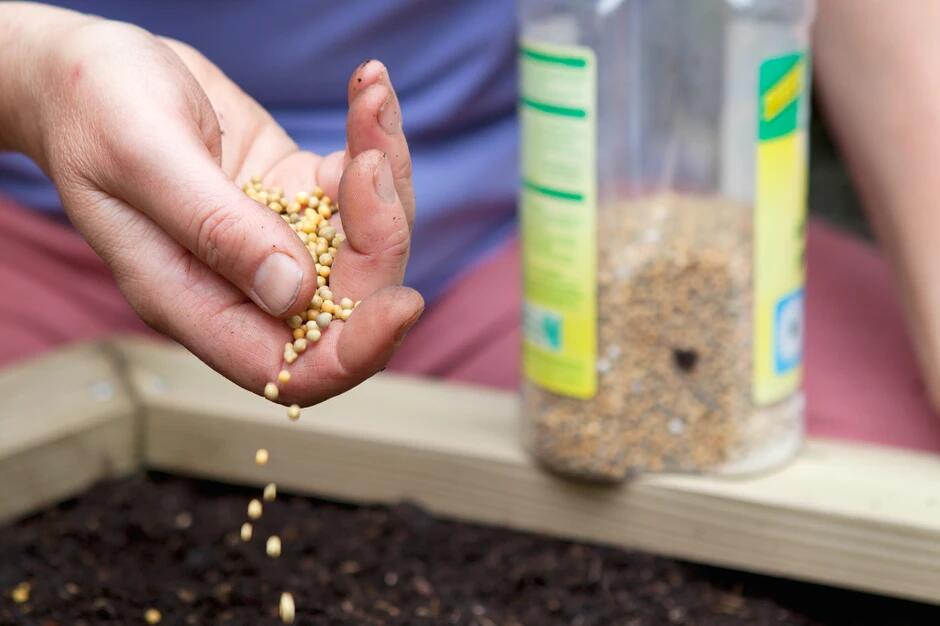Much like people, plants need a healthy, supportive environment to thrive. For plants this means several things: having adequate sunlight, the right amount of water, appropriate temperatures, and proper nutrition. Whether you’re growing flowers, vegetables, or just a lawn, you’ll need to ensure that your plants receive the correct conditions they need for growth. While watering can be easy to control, and sunlight/temperature can be moderated by location, nutrition is often a challenge for the home gardener. Fertilizers are your way to properly feed your plants, and ensure that they have what they need to thrive. Here we’ll present a brief guide to fertilizer, the different types of fertilizer, and explore how to use fertilizer in your garden.
Let’s start with some terminology. Most if not all fertilizer sold commercially has the nutritional content on the label. This generally comes in the form of an NPK number, which will look something like this: 10-20-10. What do the NPK numbers mean? Well, they tell you the percentage content of the major nutrients in that particular fertilizer, using the letters assigned to them on the periodic table of elements:
- N stands for nitrogen, which promotes plant growth and helps the green parts–leaves and stems–develop. Nitrogen is necessary for all aspects of plant growth, and a lack of it can lead to yellow leaves, slow growth, and sickly looking plants.
- P stands for phosphorus, which is a critical element for cell division in plants and helps them grow flowers and fruit. A lack of phosphorus can lead to smaller plants with lush green growth but few flowers, no fruits, and an underdeveloped root structure.
- K stands for potassium, which plants use for a variety of processes that help them live and grow. A lack of potassium can look a bit like a shortage of nitrogen: stunted sickly plants and yellowing leaves.
Thus, a fertilizer with an NPK number of 10-20-10 would contain 10% nitrogen, 20% phosphorus, and 10% potassium. This adds up to 40% of the total content of the fertilizer. What makes up the rest, you ask? It’s generally a combination of a carrier medium, which helps bind the ingredients together and get them into the soil. This can be anything from vermiculite to rice hulls, or just water in the case of liquid fertilizer. The filler is generally inert. Most fertilizers also contain micronutrients, which plants need in smaller amounts. These can include magnesium, calcium, iron, or zinc. As with nutrition for people, fertilizers are formulated differently to support specific needs, so having your soil tested might be useful in determining which fertilizer to use–in the US, your county agricultural extension will generally test soil for free. Most gardeners should do well with a fertilizer containing twice as much phosphorus as nitrogen or potassium. 10-20-10 or 12-24-12 are both popular formulations, and are normally easy to find.

So now that we know what fertilizer is and what it does, how do we use it? There are a number of different ways to apply fertilizers, depending on the kind of fertilizers and your garden setup. Most liquid fertilizers, for example, should be diluted in water per the instructions on the label and then applied as part of your normal watering to the base of the plants. Solid fertilizers can be top dressed by gently stirring them into the surface of the soil around the plants. This generally works well in container gardens or other smaller spaces. For row gardens or larger raised beds, you may consider side dressing. This involves spreading the fertilizer along the side of a row of plants. For both top dressing and side dressing, the fertilizer should then be watered in. This means just watering your plants like normal so the fertilizer starts to absorb into the soil where your plants can use it.
We hope this helps you get started using fertilizer in your garden. Now that you know what fertilizer is and how it works, you’ll be in a better position to apply it and get the most out of your plants this season. As always, we love to hear from you: what fertilizers are you using? How do you apply them? Do you have any tricks to share? Jump into the comments section or find us on social media and let us know!

Leave a comment